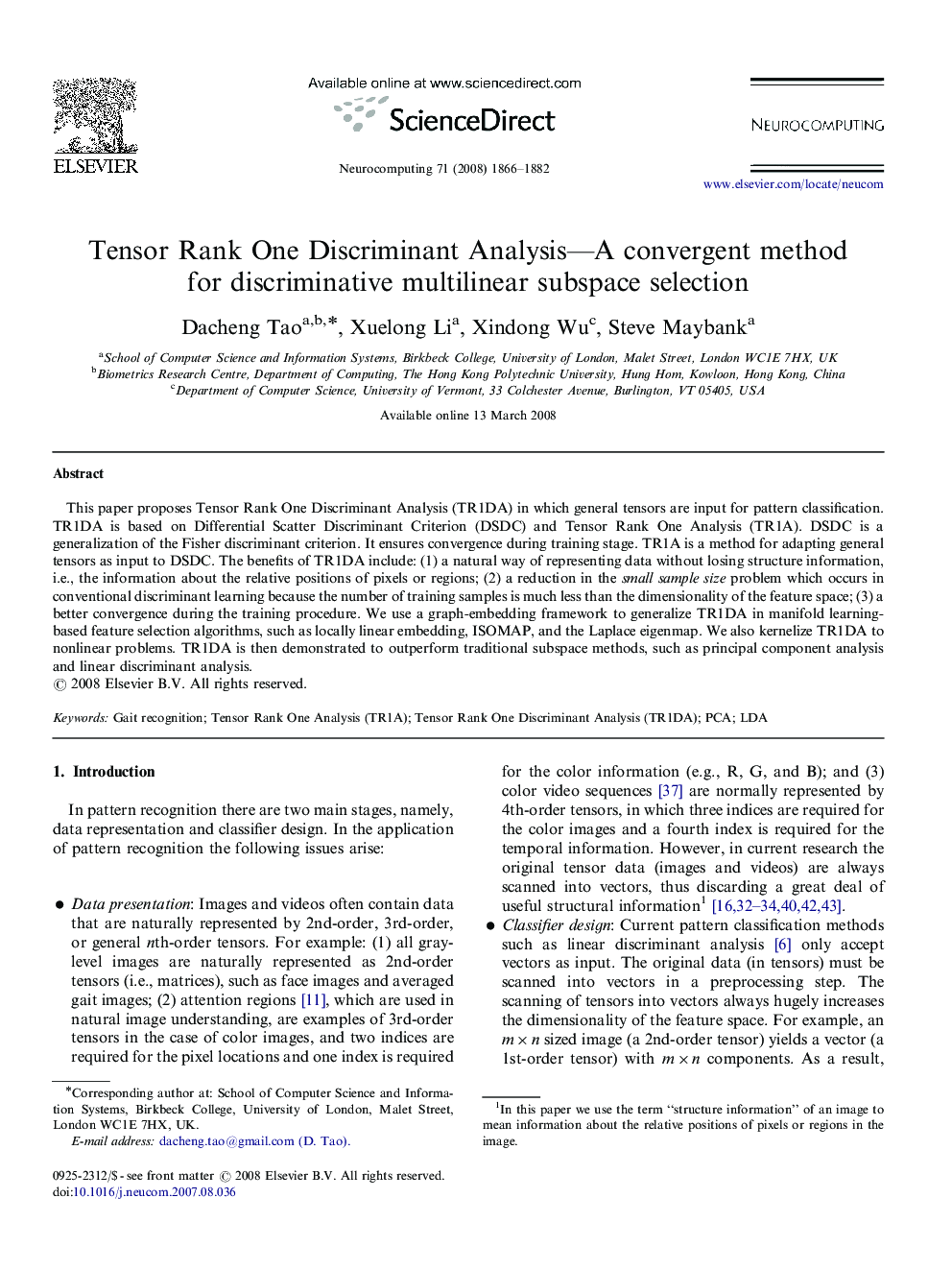| Article ID | Journal | Published Year | Pages | File Type |
|---|---|---|---|---|
| 413024 | Neurocomputing | 2008 | 17 Pages |
This paper proposes Tensor Rank One Discriminant Analysis (TR1DA) in which general tensors are input for pattern classification. TR1DA is based on Differential Scatter Discriminant Criterion (DSDC) and Tensor Rank One Analysis (TR1A). DSDC is a generalization of the Fisher discriminant criterion. It ensures convergence during training stage. TR1A is a method for adapting general tensors as input to DSDC. The benefits of TR1DA include: (1) a natural way of representing data without losing structure information, i.e., the information about the relative positions of pixels or regions; (2) a reduction in the small sample size problem which occurs in conventional discriminant learning because the number of training samples is much less than the dimensionality of the feature space; (3) a better convergence during the training procedure. We use a graph-embedding framework to generalize TR1DA in manifold learning-based feature selection algorithms, such as locally linear embedding, ISOMAP, and the Laplace eigenmap. We also kernelize TR1DA to nonlinear problems. TR1DA is then demonstrated to outperform traditional subspace methods, such as principal component analysis and linear discriminant analysis.
